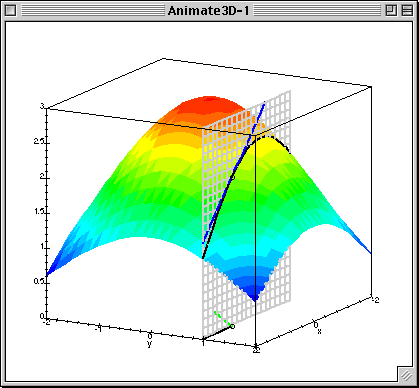You appear to be asking two questions, one about the directional derivative, the other about the dot product. Since your question appears to be mostly about the directional derivative, I will give an answer explaining the geometric meaning of the directional derivative. For ease of visualization I restrict attention to functions $\mathbb{R}^{2}\to\mathbb{R},$ but $\mathbb{R}^{2}$ can in principle be replaced by $\mathbb{R}^{n}.$
As always, a picture is worth a thousand words: if you can glean the meaning of the directional derivative from this .gif I found online then you may not need to read what I have to say. I hope the animation helps either way.

It's worth noting that the little green segment at the base of the figure in this animation is meant to represent the value of the gradient of the function at the given point.
Let $\mathbf{v}\in\mathbb{R}^{2}$ be a unit vector, considered as a vector in the $(x,y)$-plane in $\mathbb{R}^{3}.$ The vector $\mathbf{v}$ determines a unique plane $\Pi = \Pi(\mathbf{v})$ which contains the origin, the point $(0,0,1)$ and $\mathbf{v}$ itself. For example, if $\mathbf{v}=\begin{pmatrix}1\\0\end{pmatrix}$ then the plane $\Pi$ is the $y=0$ plane, i.e., the $(x,z)$-plane. (Draw a sketch to make sure you are comfortable with this idea; if you think I have explained it poorly, please ask.)
We want to consider this same plane, but "going through $\mathbf{x}$", that is, we want to consider the plane $\mathbf{x}+\Pi = \{\mathbf{x} + \mathbf{p}:\mathbf{p}\in\Pi\}.$ All we've done is taken the plane $\Pi,$ which went through the origin, and physically moved it so that the point on $\Pi$ which was previously at $(0,0,0)$ is now at $\mathbf{x}.$
Consider the directional derivative of $f\colon\mathbb{R}^{2}\to\mathbb{R}$ at $\mathbf{x}\in\mathbb{R}^{2}$ in the direction of $\mathbf{v}.$ Its value is equal to the value of the limit:
$$\lim_{h\to0}\frac{f(\mathbf{x}+h\mathbf{v})-f(\mathbf{x})}{h}.$$
This can be taken as the definition of the directional derivative; in particular, the above expression turns out to be equal to $\nabla{f}\cdot\mathbf{v}.$ [Note: This equality holds only because $\mathbf{v}$ is a unit vector. If $\mathbf{v}$ is not a unit vector then we need to introduce a scaling factor to account for this.]
Consider the graph of $f,$ that is, the set
$$\Gamma = \Gamma(f) = \{(x,y,z)\in\mathbb{R}^{3}: z=f(x,y)\}.$$
This is (more-or-less) a surface in $3$-space. If we look at the points where the graph of $f$ intersects $\mathbf{x}+\Pi,$ then we get a curve in space, which we'll call $\gamma = \gamma(f,\mathbf{v}) = \Gamma\cap(\mathbf{x}+\Pi).$
We can imagine the $z$-axis in $\mathbb{R}^{3},$ which is contained in $\Pi,$ together with the line $\ell = \{k\mathbf{v}:k\in\mathbb{R}\},$ defining a coordinate system on $\Pi$: the vertical axis is given by the $z$-axis, and the horizontal axis is given by $\ell,$ with $0$ at the origin and the values on $\ell$ increasing in the direction of $\mathbf{v}.$
That is, we can imagine the curve $\gamma$ as being the graph of some function $\mathbb{R}\to\mathbb{R},$ except that instead of drawing this graph on the usual $(x,y)$-plane we are drawing it on $\mathbf{x}+\Pi.$
The expression for the directional derivative given as a limit is telling you that the value of the directional derivative (of $f$ at $\mathbf{x}$ in the direction of $\mathbf{v}$) is the slope, under the coordinate system I have described above, of the line which is contained in $\mathbf{x}+\Pi$ and tangent to the curve $\gamma,$ that is, "the slope of the tangent line" in an appropriate plane and coordinate system.

Best Answer
I think what you are missing is that for the purpose of the derivative you can replace the function with a (hyper-)plane. In other words, the first-order Taylor approximation $$f(x) \approx f(x_0) + \nabla f(x_0)(x-x_0)$$ has the same value and derivatives as $f(x)$ at $x = x_0$. The plane is entirely determined by the gradient and you cannot change the shape of the plane to be some arbitrary shape.
Consider the simplest case, which is a function of a single variable. The plane in this case is the tangent line, and the directional derivatives are in the left and right directions. And they are the same because the tangent line is the same line in both directions. Changing the shape of the function would not change this.